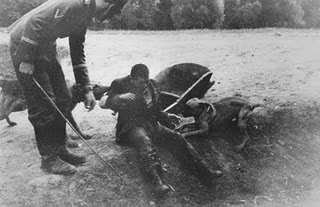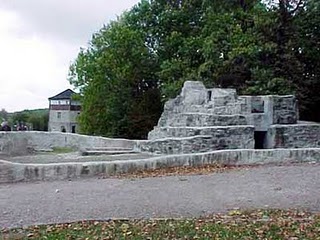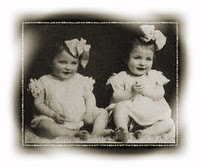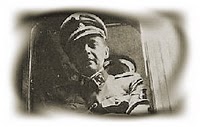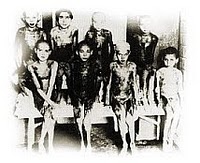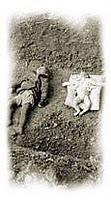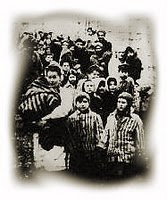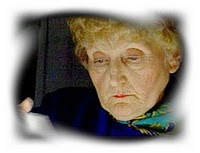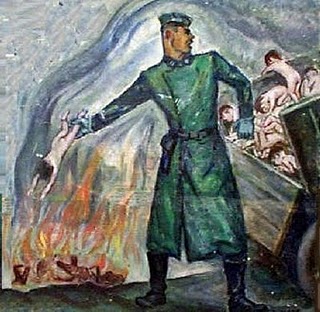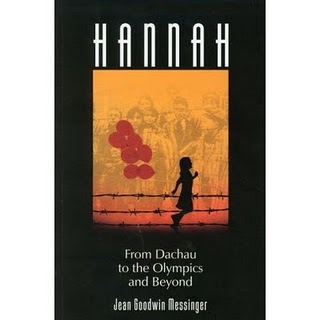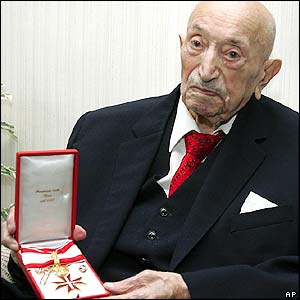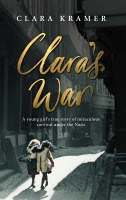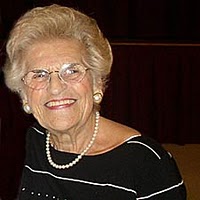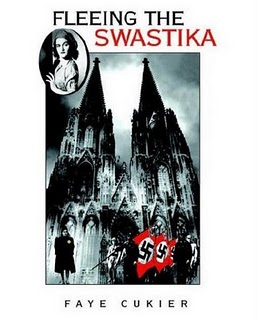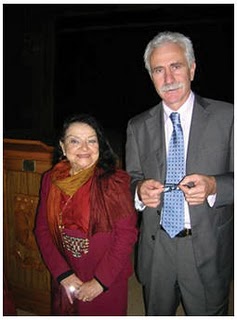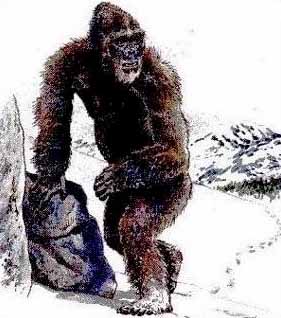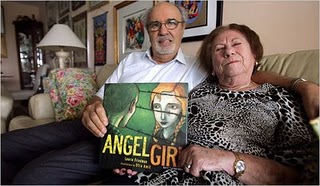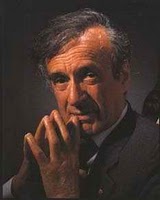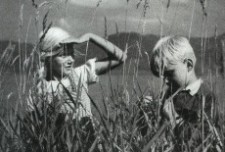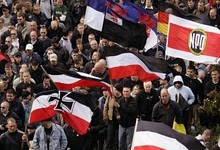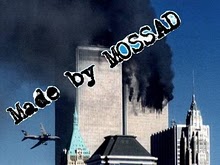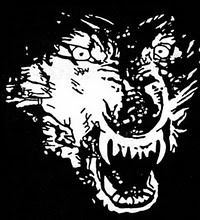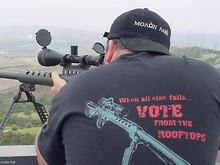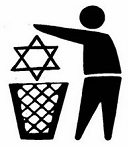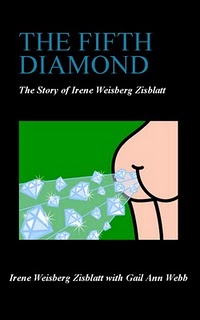
The
insane barrage of Hollywood Nazi-Holohoax movies this winter wasn't
enough for the ruling Jewish Establishment. A concurrent onslaught of
laughable phony "holocaust survivor" "memoirs" was apparantly desired to
amp up the propaganda-conditioning.
"She ate
diamonds for a year and a half, had injections in her eyeballs, was
dismembered, and had two post-sterilization children. The only memes
missing from this story are soap and lampshades. Her story makes that of
Herman and Roma Rosenblat sound almost believable in comparison." --- JimInCO
source:
miamiherald.comHolocaust survivor escaped with gems
A Pembroke Pines woman who hid her mother's diamonds while she was in Auschwitz tells her tale in a memoir.
Friday, 12.19.08
BY JENNIFER COHEN
Special to The Miami Herald
Her
mother gave her four diamonds to be used to buy bread should she ever
find herself hungry during World War II, but those diamonds gave Irene
Weisberg Zisblatt the fortitude to survive the Holocaust.
''I can
not buy bread with your diamonds, mother, but as long as I am alive
they will stay with me,'' she wrote in her memoir, The Fifth Diamond:
The Story of Irene Weisberg Zisblatt.
A resident of Pembroke
Pines since 1990, Zisblatt recently discussed her book and appearance in
Steven Spielberg's documentary, The Last Days, at Nova Southeastern
University.
Born Chana Seigelstein, Zisblatt lived in Hungary
with her parents and five siblings. In 1942, when she was 11, her
mother, Rachel, sewed the diamonds into the hem of her skirt before she
was taken by the Nazis to the Auschwitz-Birkenau concentration camp in
Poland.
Zisblatt's entire family was killed in the gas chambers,
and those four diamonds were the last mementoes of them. The only way
Irene could keep the diamonds hidden was to swallow and retrieve them
over and over again. She did this for 15 months.
Zisblatt told
the audience how, as a young prisoner in the camps, she was a favorite
of Dr. Josef Mengele, who performed experiments and surgeries on her and
other prisoners without anesthesia. A girl named Sabka was another of
Mengele's regular victims. Though they weren't allowed to speak, they
formed a friendship and Zisblatt drew strength from their bond.
''The
diamonds survived because, to me, they were the strength, the hope, the
courage, and my mother, so they had to survive,'' Zisblatt said. In
having a valuable secret from the Nazis, she felt that she was defeating
her torturers. ``For every time that I was hungry, beaten or was
tortured with experiments, I was hitting back by keeping my mother's
diamonds.''
Mengele injected chemicals into her eyes in an attempt to change their color and forced her to remain in a cold room for days.
He injected viruses under Zisblatt's fingernail and surgically
experimented on her to find a way to remove the numbers tattooed on her
arm. Afterward, he ordered the nurse to administer a lethal injection to
both girls, but the nurse worked for the underground and was able to
free them, one of many miracles Zisblatt experienced.
''Mengele
was the most good-looking man,'' she said. ``He could have been the one
scientist in the world who could have developed extraordinary things for
humanity, but he became a murderer. He would look at me and smile and
at times I could not believe this man could ever hurt me, he could be so
charming. But the next minute, he was cutting me up into little pieces.''
In
1945, Irene and Sabka were part of a group of 5,000 prisoners forced to
march in the cold. Every day, weakened prisoners dropped dead around
her. After two months, they escaped. Exhausted and covered in lice, they
walked through the forest and managed to stay alive by digging up food.
The
pair were finally liberated by Gen. George Patton's Third Army, but
Sabka died the very next day. Once again, Zisblatt lost her only family.
After her recovery, she was taken in by relatives in America and began a
new life with a new name. She married in 1956, and although she
had been given watery soup filled with chemicals to destroy her
reproductive organs, she gave birth to a son and a daughter in the 1960s.
Not
wanting to remember her past, Zisblatt kept her mother's diamonds in a
vault. Years later, at her husband's suggestion, she had the diamonds
set into a pendant in the shape of a tear drop. She does not wear them
regularly -- only when she speaks to future generations.
Zisblatt
had vowed that if she survived, she would be a voice for her fellow
prisoners. But it was not until her son asked her about the Holocaust
that she was ready to share her story.
''For 50 years, I didn't say a word. I didn't want my children to live with my pain,'' she said.
After
taking part in the March of the Living, a walk through the camps
culminating in Israel, she began to share her story to educate children
in order to rid the world of prejudice and indifference, and to teach
future generations about the past and what hatred can do.
''I am a
survivor of man's hatred,'' Zisblatt said. 'We were dragged from our
homes, robbed of our childhood, yanked from our mothers' arms. I was
living in a factory of death.''
More of this jewess' ludicrous story:
source: http://media.www.nsucurrent.com/media/storage/paper779/news/2008/11/25/CurrentAffairs/Holocaust.Survivor.Irene.Zisblatts.Tale-3560693.shtml
Holocaust Survivor Irene Zisblatt's Tale
Alexis Irias, Staff Writer
11/25/2008
On
Nov. 18, the Circle of Friends of the Alvin Sherman Library, Research
and Information Technology Center presented the 2008 Author Series
"Moving Forward from Darkness to Light." The lecture featured Holocaust
survivor Irene Zisblatt and her compelling memoir.
Irene Zisblatt
is the author of "The Fifth Diamond: The Story of Irene Weisberg
Zisblatt." She also appeared in Steven Spielberg's Survivors of the
Shoah Visual History Foundation documentary, "The Last Days."
The
evening began with a short introduction of Zisblatt and was followed by
a showing of her documentary "The Last Days." The documentary was a
reflection to the past of Renee Firestone, Alice Lok Cahana, Bill Basch
and Irene Zisblatt, who each shared their powerful story of how they
survived the Holocaust.
Throughout the documentary, Zisblatt
shared her personal experiences with the audience. She spoke of her
family, her life in Hungary and how she became the only survivor of her 40 family members.
She said how oblivious most people were about what was soon to happen
to them. As Jews in Hungary, they had non-Jewish friends who betrayed
them in the end.
Zisblatt held the audience's attention with her
life story. Throughout the room, the audience reacted with tears to her
painful yet compelling memories. Zisblatt recounted the last time she
saw her mother and siblings. She said that the Nazis snatched her little
sister's hand from hers, leaving her with the last memory of them as
she was taken away.
When she was taken to the concentration
camps, she was forced to give all her personal belongings to the Nazis.
She refused to let them take the only memory of her mother, so she put
the diamonds in her mouth. "The diamonds were the only thing I had left
to remember my mother; she sewed them into my skirt and told me to buy
bread with them," said Zisblatt.
When the Nazis were taking out
all of the gold teeth and cavities from the Jews, Zisblatt said that she
had no other option but to swallow them. She would swallow and excrete and wash and swallow again every day in order to conserve her mother's diamonds.
Zisblatt
had the audience in tears in her description on what she thought was
her last few minutes alive walking to the gas chambers. "We stood naked
waiting in line to get to the gas chambers. But as we stood naked, we
didn't feel the nakedness, only our souls were naked," she said.
The
passion that Zisblatt stirred amongst the students was remarkable. "I
wish all my students could have been there," said Gary Gershman, Ph.D.,
associate professor of legal studies in the Farquhar College of Arts and
Sciences' Division of Humanities. "Even though I read her book, I'm as
moved as I've ever been. This reinforces in my mind that it should be
mandatory for every student to hear a Holocaust survivor speak."
Zisblatt
was lucky enough to be saved and alive. She hid the story for years in
fear that no one would believe her. But now, she is determined to learn
from yesterday and share with the present and future. She encourages the
children of today to tell her story. "You are the last generation to
meet a Holocaust survivor, so help me share the story when I am no
longer here."
Commentary from James Edwards at
thepoliticalcesspool.org:
Irene Zisblatt - yet another Holocaust memoir hoaxDecember 30, 2008
La
Shawn Barber, the popular black neocon blogger, is kicking herself.
She’s upset that she didn’t blog about what an obvious Holocaust hoax
Herman Rosenblat was trying to pull off with his Angel At The FenceGirl
With The Apple baloney. I wrote about Rosenblat yesterday. So did La
Shawn, but now she’s wishing she’d had the gumption to go with her
instincts and point out what an obvious fraud it was before Rosenblat
and his publisher admitted it:
Oh, how I wish I’d blogged
about the latest literary hoax last week before the publisher canceled
the contract! Feet-dragging is a bad habit, boys and girls.
Well,
La Shawn, you’ve now got a shot at redemption. No, I’m not talking
about Elie Wiesel and his obviously phony memoir, Night. Sure, it’s full
of countless whoppers, and he somehow forgot to mention any gas
chambers at Auschwitz, but instead claimed 10,000 Jews a day were killed
there by being thrown alive into burning ditches, which all historians
say never happened, let alone ten thousand times a day for months. But
never mind Elie Wiesel. His book is about as trustworthy as Bernie
Madoff’s accountants, but he won a Nobel Prize for that stuff, and TPTB
wouldn’t look kindly on you pointing out that Emperor Elie is naked.
You’d probably be called all kinds of rude names, like uppity schvarze.
You need a safer target.
Well, you’re in luck, La Shawn! Meet
Irene Zisblatt. Just like Herman Rosenblat, she too has a new book out
talking about her experience in a concentration camp. She says she was
in Auschwitz, just like Elie Wiesel, but unlike him, she was smart
enough to write about Jews being killed in gas chambers, not thrown into
burning ditches by the thousands. And just like Herman Rosenblat, her
story is completely unbelievable. Not a little bit unbelievable. Not
somewhat unbelievable. It’s completely, over the top unbelievable.
Complete and utter nonsense. No one in their right mind could believe
her story. It cannot possibly be true.
Her book is called The
Fifth Diamond. The title refers to Irene Zisblatt herself - she’s the
5th diamond. What about the first four diamonds? Well, Zisblatt (who
says she was born Chana Siegelstein) says that before her parents were
killed and she was taken to Auschwitz, her mother sewed four diamonds
into the hem of her skirt so she would be able to buy bread one day.
Once she got to the concentration camp, there was no place to hide the
diamonds for safekeeping, of course. So what did Zisblatt do?
She
swallowed the diamonds. And then she dug them out of her poop and
swallowed them again. And again the next day. And the next day. Every
day for 15 months, nearly 500 days, she swallowed those diamonds, dug
them out of her feces, and ate them again.
Uh-huh. Sure she did.
Now,
the fawning newspaper article doesn’t go into all that gross detail. It
simply says she “retrieved” the diamonds every day after swallowing
them. But this article from 2000 makes it clear:
Irene
Zisblatt, a grandmother now, recalls her own mother’s sewing diamonds in
the hem of her skirt — diamonds the little girl would swallow and
excrete and wash and swallow again every day in Auschwitz; diamonds she
will pass down in pendant form to the first girl child in each new
American generation.
That article is about her
appearance in a “documentary” about the Holocaust by Steven Spielberg
that was shown on HBO, The Last Days. And she and Spielberg and HBO
expect people to believe this stuff. And they do. Anything goes when it
comes to Holocaust survivor stories. It’s pretty much a hate crime to
question any of these fabrications, no matter how outrageously
impossible they are to square with reality.
Now, I’m no doctor,
but I’m pretty sure that eating four diamonds every day would destroy
your esophagus long before 15 months had elapsed. I’m aware that some
smugglers have swallowed gemstones on rare occasions, but it boggles the
mind to think a person could do this every day for 15 months and live
to tell about it.
Then there’s all the fecal material she would
have ingested. If she hadn’t sliced her esophagus to shreds, that
would’ve killed her alone. From everything we hear about the
concentration camps, they barely had enough water to drink every day,
but she had enough to scrub four fecal encrusted diamonds clean enough
to eat every day? The camps were filthy, but she had plenty of hot water
and sanitizer? Come on. There was no way she could have gotten those
diamonds clean enough to swallow every day. She would have eventually
died from ingesting her own feces.
And how did she have the time and privacy to pull this off every day without getting caught? That part alone defies belief.
Oh,
and if you still think that there’s a chance in hell that Zisblatt’s
story could be true, here’s the kicker. She claims, just like Rosenblat,
that she sat on this story for half a century and never told anyone.
But in the late 1990s she suddenly felt compelled to share her
“testimony” with the world.
Yeah, right.
So there you go,
La Shawn. Have at it. Knock yourself out. Expose this latest in the long
line of phony Holocaust memoirs before everyone else does, and avoid
the rush!
Related:
More Holohoax Tales
